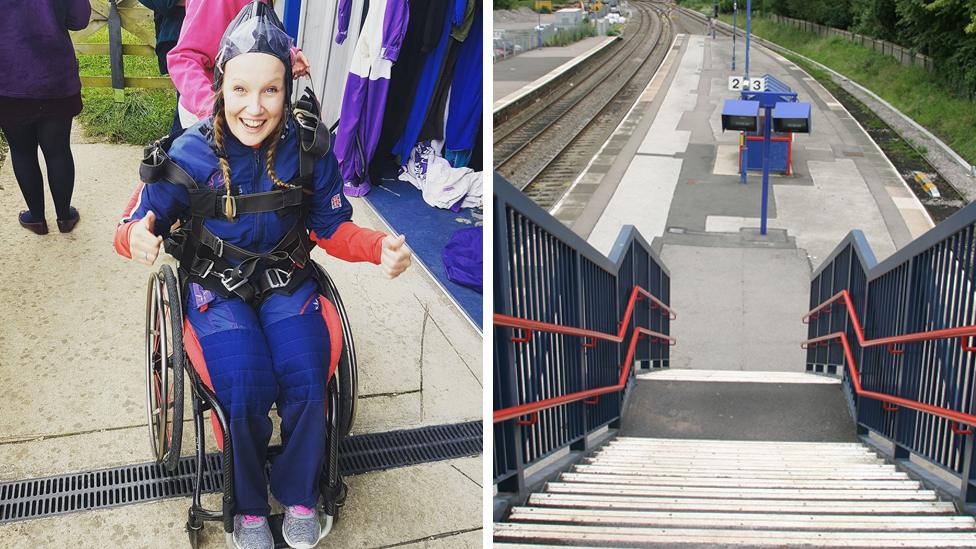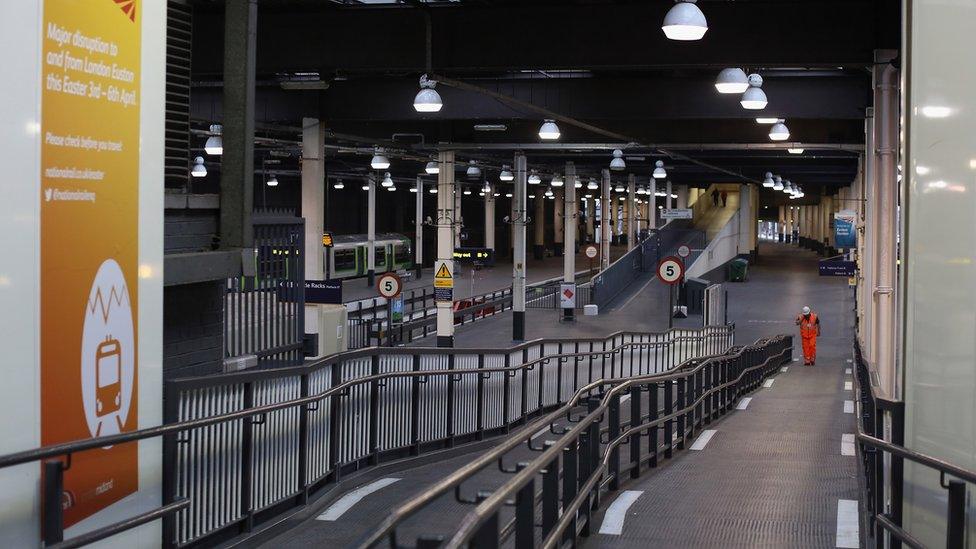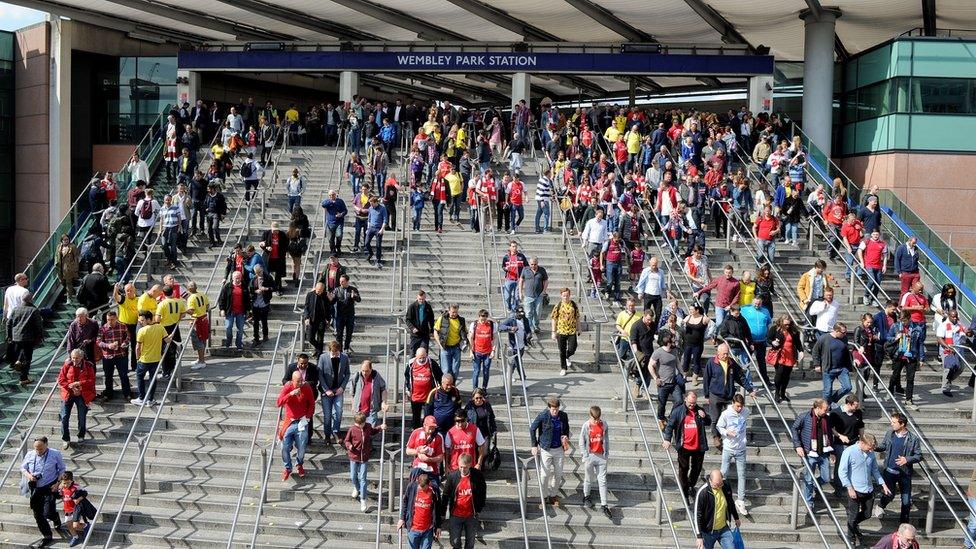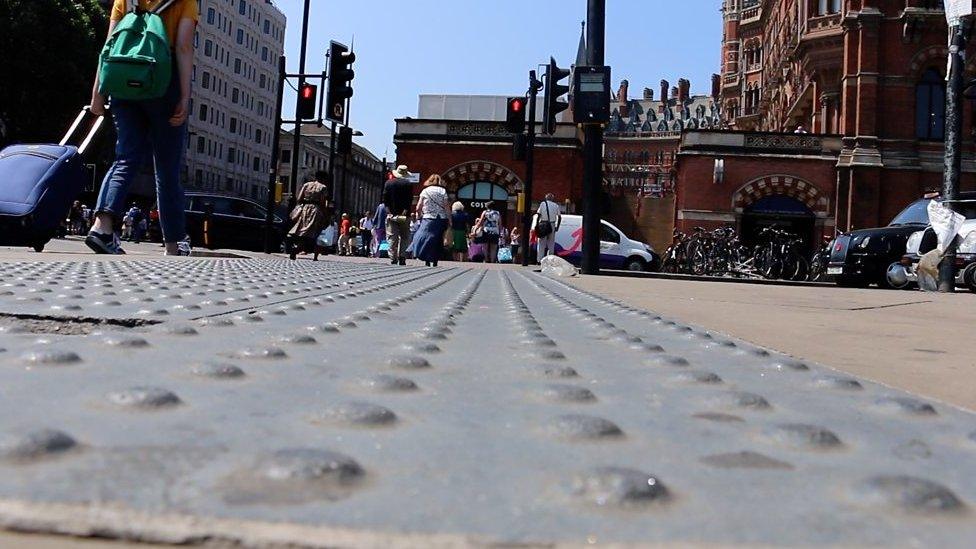Train stations are a nightmare for people like me
- Published

A lack of clear information is making it difficult for disabled people to travel independently, with 40% of the country's 2,560 train stations inaccessible for some people, according to analysis by the charity Leonard Cheshire. Here, Team GB Para athlete and freelance reporter Chloe Ball-Hopkins describes her experiences using a wheelchair on Britain's railways.
When I saw that 40% of disabled people struggle at train stations because of a lack of steps, my first thought was that my experiences have been OK.
I catch the train from Bristol Parkway to London Paddington quite regularly now and other than one train not having an accessible toilet on it, I have never had a problem with the stations either end.
But then I thought a little more, and that isn't all true.

Chloe is a Para athlete and archer for Great Britain
I thought about the route I take to Manchester Piccadilly, and how the Cheltenham station I use to get there had a really steep ramp down to the platforms.
In a manual wheelchair that's great fun to go down - but you can't get back up again when you return. Dilemma!
It means if you wheel your own chair you're reliant on help. People are normally happy to give you a hand, but that isn't really the point is it?

Sometimes ramps can be a problem too
Although I say my regular Bristol to London journey is manageable, when I arrive at Paddington I don't head to the underground like most people do - I head outside to the taxi rank.
When I was in London for some of the events at the Paralympics in 2012, using the tube was the easiest way to get from A to B.
I was so lucky to be with people who helped me use the escalators - how naughty.
But that was the only way we were going to be able to do all the things we wanted without having to pay a lot of money for taxis everywhere.
Lots of stations just don't have step-free access.

Getting around the London Underground can be difficult for some people with disabilities
I think that's the point...
Just because people like myself can't use steps and some stations don't have alternative options, it means we end up paying a lot of money just to be able to get about like everyone else does.
Many people with disabilities may not be able to drive, have a vehicle suitable for them, or be able to drive long distances even if they do have a car.
Using the train is supposed to be an easy and relaxed way to get about but instead it ends up being frustrating and deflating.
I know some stations that are older buildings struggle with putting things like ramps and lifts in place, but that doesn't give them an excuse not to try and find a way to cater for everyone.
Whether that's someone like myself who can't use the ramp they have put in place because it's too steep, or a blind person who has to try and manage flights of steps that they cant see.
The staff at the stations can be the friendliest people going but it doesn't resolve the situation if someone in a wheelchair is sat at the top or bottom of the steps with a train to catch in a matter of minutes.
Commuting on a train should be an easy way to get about your day - and that should apply to people like me too.
Newsbeat has contacted National Rail for comment.
Follow Newsbeat on Instagram, external, Facebook, external and Twitter, external.
Listen to Newsbeat live at 12:45 and 17:45 every weekday on BBC Radio 1 and 1Xtra - if you miss us you can listen back here.
- Published5 July 2018

- Published21 July 2018
